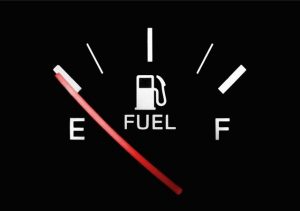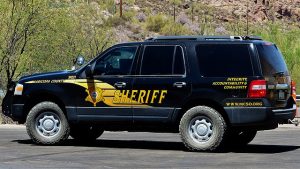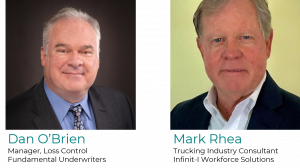How a Communication Failure Left my Driver Stranded
Join us Thursday, October 15 @ 10:30
Intersections are one of the most high-risk areas for truck drivers. Two industry experts will be discussing the dangers, both preventable and nonpreventable, of intersection traffic and the threat they present to your drivers. Free sign up here.
- – Dangers of distracted driving – and how to get your drivers to stop.
- – Dash Cams – real-life footage of some nasty accidents at intersections
- – Flashing yellow lights – What do they mean?
- – The likelihood of intersection accidents:
- – How to prevent intersection accidents
- – How to lower your insurance risk.
In the spirit of the webinar, I felt compelled to share a personal experience that occurred during the fleet management portion of my career.
The Pre-plan
 Danny P. ran on my fleet for about a year before this particular incident. During that time, we developed a working relationship in which we were truly a team. I trusted his judgment and he never let me down.
Danny P. ran on my fleet for about a year before this particular incident. During that time, we developed a working relationship in which we were truly a team. I trusted his judgment and he never let me down.
Danny was the kind of driver who could, “see the future.” He relied on his past experiences and trucking knowledge to make the best decisions possible for the company and for himself. He made my job easy as a fleet manager. I would simply call him up for a status check and let him roll.
I called him on a Tuesday to discuss his plan for the day. Our conversation surrounded the typical trip planning discussion. Did your pre-trip look good? Did you check the traffic? Are we good for OTD?
Of course, he had everything under control. “Yes ma’am, everything is great. Need to get some fuel though; didn’t see an in-network station on my route.”
I advised him to call the fuel department and ask to insert an emergency fuel stop, as that was our procedure.
The Miscommunication
The fuel department ran like a well-oiled machine. They employed algorithms and formulas; they could calculate to the mile the distance a driver could travel on the existing amount in the tank. And they rarely made mistakes.
The problem is, the fuel department did not take into account idle time spent at red lights, outside temperature variances, traffic jams, or road grade. All of which can incrementally affect a tractor’s fuel economy. It was a task considered impossible, as they sat in cubicles above the operations department and not behind a windshield.
 He called me back with an urgency in his voice that thinly masked his frustration. “They won’t let me get fuel. The computer says I have plenty to get to the next fuel stop. I’m telling you, boss, I am not going to make it.”
He called me back with an urgency in his voice that thinly masked his frustration. “They won’t let me get fuel. The computer says I have plenty to get to the next fuel stop. I’m telling you, boss, I am not going to make it.”
I immediately recognized this as a communication issue between departments. I empowered my drivers to make the right decision on the road, the fuel department focused on the bottom line. Our contracts with in-network fuel stations allowed us to purchase fuel at a lower rate. The fuel departments goal: to save money. Allowing Danny to purchase fuel from an out-of-network station would impact their numbers in a negative way. However, in this instance, its more than “just business.”
I went knuckle to knuckle with the fuel department. “He is going to run out of fuel. I cannot fail this load, please let him stop out-of-network. What if he gets just enough to run to an in-network station and then he can fill up?”
“No. He has enough fuel to make it to the in-network stop.” – Fuel
It was absolute gridlock. Danny and I had a task to complete. The fuel department had metrics to meet. We could not come to an agreement; Danny would roll on until he reached an in-network fuel stop.
The Potential for Tragedy
The following conversation occurred 55 minutes later, 17 miles from the in-network fuel station he was to attend:
“Lindsay, I ran out of fuel. My tractor is sitting under the traffic light. It is blocking the entire intersection. I don’t know what to do.”
“Are you ok? Did you call 911?”
“Yes, and yes. The sheriff is on his way here. What do I do now?”
The panic in his voice added to the sound of car horns blaring and incoming sirens painted a picture of his terrifying experience. He was scared, so was I.
He repeated the question, “What do I do?”
“Ok. The sheriff will take care of the scene, leave the truck. You get somewhere safe,” I advised.
 It was my best guess, as this was not a typical occurrence.
It was my best guess, as this was not a typical occurrence.
We did not have a set procedure regarding performance expectations when your tractor happened to run out of fuel in an intersection while traffic is backing up and civilian drivers are screaming at you. I had to rely on my past training and relay information based on my experiences.
After the sheriff arrived and Danny managed to calm down, I asked him to give me a description of the scene.
“Uh, my truck is sitting diagonally in the intersection, blocking 3 of the 4 lanes at the crossroad. Traffic is backed up at least a half-mile. The light has switched from green to yellow to red about 40 times since I broke down. And I have been flipped off at least that many times. The cops are directing traffic around the truck. Emergency is on the way with fuel; just enough to get to that in-network station. We aren’t going to make this load, ma’am.”
Fortunately, no injuries occurred. This incident, however, could have turned dire in a matter of seconds.
What We Learned
We experienced a failure that day. The mechanical failure was not the only one that occurred in this particular scenario. The entire company experienced a major communication failure, which is typically easy to avoid.
We became more focused on profit than the safety of our driver and the public area through which he was hauling. This breakdown in communication was a product of our company’s cultural relationships.
 Cultivating a solid safety culture as a foundation leads to increased morale, productivity, and retention. We may have saved a few dollars by prohibiting an out-of-network fuel stop, but we could have lost a driver. And we definitely lost his trust.
Cultivating a solid safety culture as a foundation leads to increased morale, productivity, and retention. We may have saved a few dollars by prohibiting an out-of-network fuel stop, but we could have lost a driver. And we definitely lost his trust.
A solid cultural relationship ensures each department trusts each other. A solid safety culture ensures each person in your enterprise is educated and empowered enough to make the right decision.
Infinit-I is transportation’s most trusted, preferred, and referred learning management system on the market. The platform is proven to increase communications, enhance safety cultures, reduce turnover, and save lives.
Thanks for sticking with me, here’s a free demo. During this high-level overview, our safety experts will demonstrate the power of Infinit-I Workforce Solutions and how we will elevate your safety culture.
Join us Thursday, October 15 @ 10:30
Intersections are one of the most high-risk areas for truck drivers. Two industry experts will be discussing the dangers, both preventable and nonpreventable, of intersection traffic and the threat they present to your drivers. Free sign up here.
Presentation to include:
- – Dangers of distracted driving – and how to get your drivers to stop.
- – Dash Cams – real-life footage of some nasty accidents at intersections
- – Flashing yellow lights – confusion, what do they even mean?
- – The likelihood of intersection accidents:
- – How to prevent intersection accidents
- – How to lower your insurance risk.











